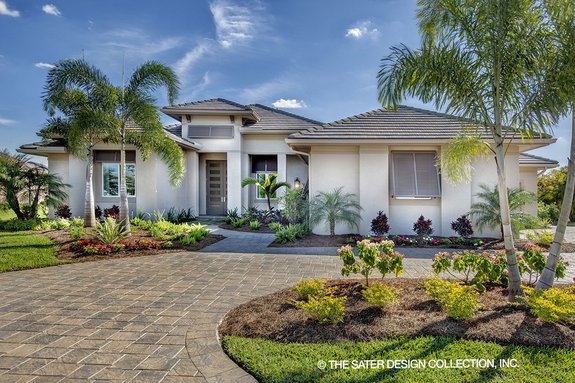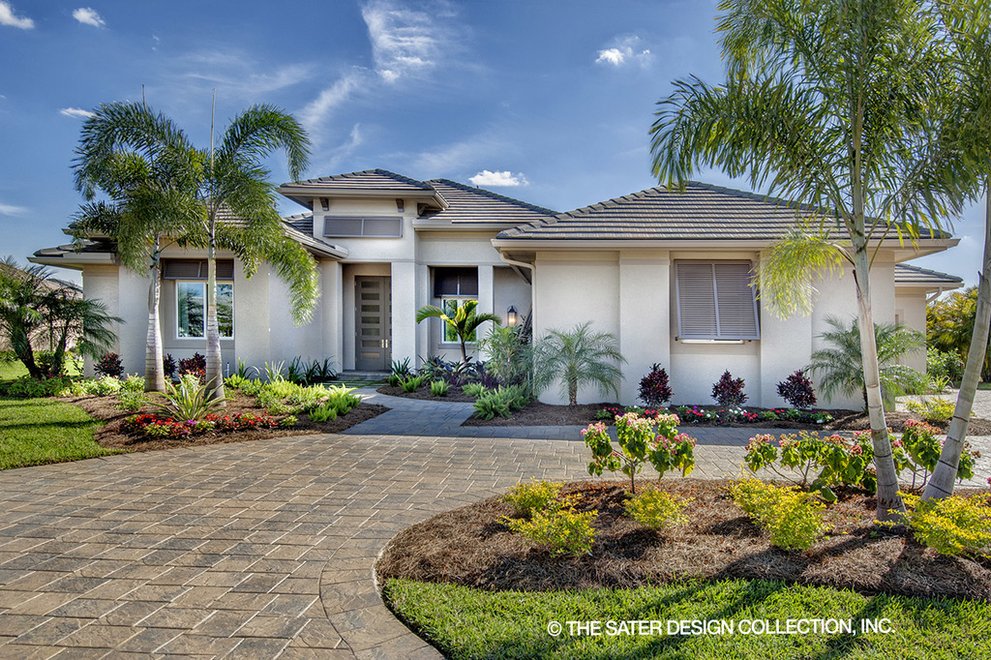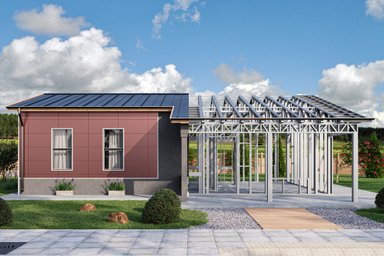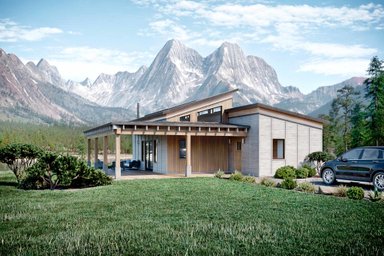By: Boyce Thompson
If you plan to build within Tornado Alley (from North Texas through South Dakota) you are probably already thinking about protecting your future home from strong winds. Wind-safe construction is also a big consideration, of course, if you plan to build in coastal regions along the Atlantic, Pacific, or Gulf of Mexico, where severe hurricanes increasingly take their toll. In fact, if you add up all the areas of the United States subject to high winds, it encompasses most of the United States east of the Rockies.
Click here to browse our collection of stone and brick house plans and Texas home designs.
There isn’t much you can do to build a house that can bear the brunt of the most powerful storms. That was made clear by the damage inflicted this fall by Hurricane Michael and by the two-mile-wide twister that hit Moore, Oklahoma several years ago. The strongest storms destroy everything in their path, including hospitals and schools built with steel and concrete. Even freshly built homes were no match for the EF4 tornado that visited the Northern suburbs of Dallas during the 2015 holiday season.
But engineers who have done field studies after major storms have shown that most of damage done by tornadoes and hurricanes is caused by lesser storms, and lesser winds around the periphery of bigger storms. The good news is that they “produce winds which a carefully constructed building can be expected to withstand,” the Engineered Wood Association (APA) reports. The bad news is that local building codes are slow to adopt protections. The bottom line is that in today’s market, it’s up to homeowners, working closely with a builder and structural engineer, to ensure that their home is built solidly.
 Plan930-476
Plan930-476
That said, some home designs, like plan 930-476 (pictured above), resist winds better than others. History and science have shown that hipped roofs do a better job preventing wind uplift than gabled-roofs; that’s the reason you see so many homes of this style in the Southwest. You often see homes in that region with short eaves and overhangs, so that wind can’t build force underneath and push off the roof. And it’s common practice in regions particularly vulnerable to fierce storms to build at least part of them them with brick, block, stone.
Nelson Design Group, based in Jonesboro, Arkansas, shows most of its plans with brick exteriors, simple hipped roofs, and minimal overhangs. Vents and other openings in the exterior are kept to a minimum for wind to penetrate. The home pictured below features a safe room with reinforced walls in the garage. The preferable location for a safe room is on the first floor within the interior of a home. Basements may provide excellent wall protection, but they may be difficult to escape if the building collapses.
 Plan923-58
Plan923-58
Safe room walls need to be solid and sturdy, the Nelson group advises, with roofs that are constructed as part of the structure. Corners need to be continually or mechanically attached to prevent separation. Floors must be anchored directly to the home’s foundation. In fact, the entire safe room must be anchored to the foundation to prevent it from turning over or dislodging during an extreme weather event. Here’s another, smaller plan (pictured below) with a safe room and brick walls.
 Plan17-2540
Plan17-2540
What about protecting the structure itself? The good news is that nearly any plan can be adapted by local engineers to do a better job resisting high winds. The key is tying the roof to walls with inexpensive hurricane clips and connecting the walls to the foundation with widely available anchor bolts. You also need to make sure that there’s lateral bracing in the walls – that means sheathing the home with plywood or OSB. Structural elements must be tied together carefully so that they transfer wind loads to the ground.
Moore, Oklahoma, is one of the few cities in the country with a tornado code. Chris Ramseyer, an associate professor of engineering at the University of Oklahoma in nearby Norman who helped design the code, estimates that its provisions add only $1.50 to $2.20 per foot to the cost of a home. That works out to about $3,000 or $4,000 for a 2,000-square-foot home, less than the cost of a granite countertop.
One of the biggest changes in Moore was to require garage doors fortified to withstand 135-mile-per hour winds. (The Florida building code contains a similar requirement). In the wake of the last major tornado, inspectors found that high winds had an easy time infiltrating houses through weak garage doors. And once the winds got inside the house, they ripped off the roof and exploded out walls, much like what happens when you pop the top off a shaken soda can. Many homeowners install windows with tempered glass for the same reason. They can withstand the impact of flying debris.
In most areas of the country, building codes may not provide enough protection from a major storm. That’s why a structural engineer needs to review your plans. After a series of twelve or more tornadoes ripped through the Dallas suburbs in 2015, APA engineers swooped in to investigate. They discovered that the tornado flattened homes directly in the path of the highest winds, as the picture above demonstrates. But they also found that the damage was surprisingly high to homes hit by lesser winds, because they had been built poorly.
Most of the damage was due to poor connections between roof and walls. Framers used toenails to connect roof framing the exterior walls when inexpensive light-gauge metal connectors could have saved many of the roofs. “With these, the load is resisted in directions perpendicular to the nail shank rather than acting to pull the nail straight out. Use of these metal connectors was only observed in one case among the homes where loss of the roof structure occurred.” Every new home built in Moore employs these connectors.
Another common, very preventable cause of failure: attaching walls to foundations with pins instead of anchor bolts. In most cases, framers shot pins from nail guns to attach the bottom of support walls to concrete-slab foundations. The technique saves time and money, and it also meets many local building codes. But most “modern” building codes, the report says, call for “deformed steel anchor bolts to be embedded into reinforced concrete foundations for attachment of wood framing.” Again, in Moore, walls are anchored to foundations.
Other buildings crumbled for lack of lateral bracing in walls. They were often sheathed with 1/8-inch laminated fiber, rather than thicker OSB or plywood. The thin material didn’t transfer loads within wall, especially at corners and between floors. Many exterior walls were clad with poorly installed brittle brick veneer, which got hammered by the high winds. “Falling brick from veneered walls, columns, and chimneys were observed across a wide range of wind speeds in the impacted areas, representing a considerable threat to life safety.”
The APA report also revealed large breaches in homes due to the failure of windows and garage doors. Even in areas with low to moderate wind speeds, weak apertures gave way, allowing air to get inside and pressurize the building. The pressure blew out roofs and walls, allowing rains to enter. Insurance companies report that mold can begin forming within 24 hours. All this is preventable, of course, if you build with tempered glass windows and storm-resistant garage doors.
Take a look at our Texas house plan designs.
Browse our collection of basement plans here.
Explore stone and brick house plans here.






